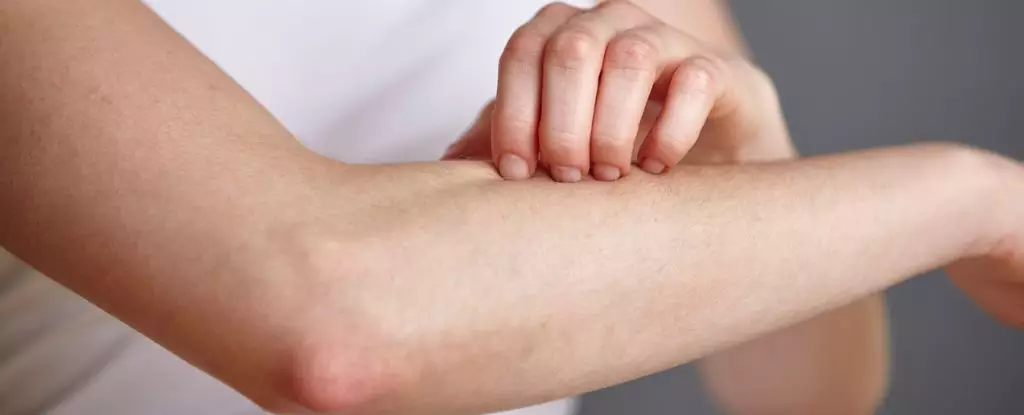In a world where superbugs like Staphylococcus aureus threaten health on a global scale—claiming over a million lives annually—it is easy to underestimate the silent protectors living right on our skin. The skin microbiome, a complex ecosystem of microorganisms, plays a vital role in our health, with one often overlooked player emerging as a potential hero: the yeast *Malassezia sympodialis*. This ubiquitous fungus could hold the keys to combating one of the most dangerous pathogens known to humanity, serving not just as an inhabitant but as an active guardian against pathogenic invasions.
The Protective Powers of *Malassezia sympodialis*
Recent revelations from research spearheaded by scientists at the University of Oregon (UO) indicate that *M. sympodialis* could be a formidable foe against the notorious *S. aureus*. By metabolizing oils and fats present on our skin, this natural yeast converts them into bioactive fatty acids with profound implications for our health. Specifically, these acidic byproducts appear to create an inhospitable environment for harmful bacteria, signaling a remarkable defense mechanism that we must take seriously, especially when traditional antibiotics often fail.
The lab studies conducted by UO researchers provide compelling evidence for this claim. They observed that when *M. sympodialis* was introduced to various strains of *S. aureus*, there was a staggering decline—more than 100-fold—in bacterial viability within a matter of hours. This alarming statistic underscores the necessity of examining our skin’s natural defenses, which might provide innovative avenues for addressing antibiotic resistance, one of the most pressing health crises of our time.
Understanding the Mechanisms at Play
The intrigue surrounding *M. sympodialis* does not merely rest upon its interactions with *S. aureus* but extends to the biochemical intricacies involved. The compound implicated in this microbial battle, 10-hydroxy palmitic acid (10-HP), has been largely ignored due to its seemingly innocuous presence in non-acidic lab environments. This is a striking example of how human bias can sometimes overlook natural solutions simply because they arise in the very habitats we inhabit.
By utilizing human skin biopsies from healthy individuals, Kowalski and her colleagues were able to demonstrate that *M. sympodialis* produces this potent fatty acid, highlighting the need to rethink our understanding of microbial interactions. The quest for new antibiotic compounds typically focuses on the production of novel chemicals, yet this study firmly posits that rediscovery of existing agents—especially those operating naturally within our ecosystems—might lead us toward more effective antimicrobial strategies.
The Resilience of Bacteria and the Race Against Resistance
Despite the promising findings, it is important to contextualize them within the broader narrative of bacterial evolution. *S. aureus* is notorious for its ability to adapt and develop resistance against various forms of attack, including those posed by *M. sympodialis*. As the lab experiments revealed, while the yeast could significantly affect the bacteria in a short time, adaptability is ingrained in the bacteria’s nature, enabling them to counteract the antifungal effects. This dynamic presents an ongoing challenge, emphasizing the need for a deeper investigation into the genetic behaviors facilitating such rapid shifts in *S. aureus*.
Moreover, the researchers noted that not all Staphylococcus species demonstrate the same harmful tendencies, and intriguingly, other species appear to have cultivated a symbiotic relationship with the yeast. This raises crucial questions about the intricate balance within the microbiome and how different microorganisms can coexist without tipping the scales toward pathogenicity.
Advancing Our Understanding of Microbial Interactions
The work of Kowalski and her team signifies a crucial step toward unpacking the complexities of our microbiomes. As they embark on further research to dissect the genetic underpinnings of antibiotic resistance, we find ourselves on the brink of a new domain in microbiome studies—one that could reveal not only the strategies of *S. aureus* but also the multitude of interactions that occur within our skin’s ecosystem. Anticipation looms around the potential applications of this research; it could eventually lead to the development of novel therapies that tap into our body’s existing defenses instead of relying solely on synthetic antibiotics.
The exploration of *M. sympodialis* and its interactions with pathogenic bacteria could pave the way for revolutionary treatments that align with our biological systems. In a healthcare landscape increasingly dominated by antibiotic resistance, investing in our understanding of natural defenses may be the most promising path forward.

